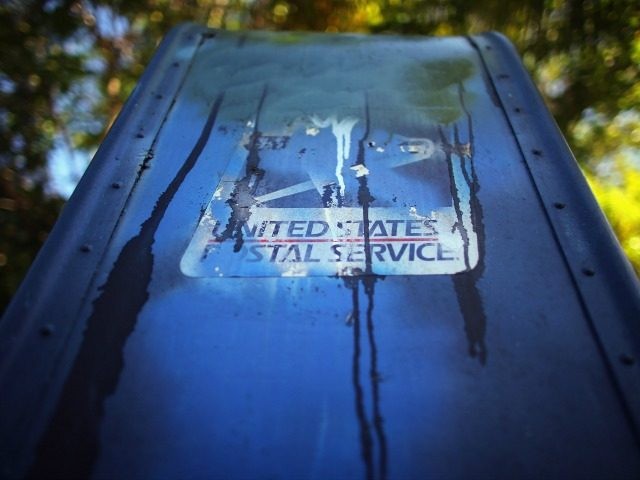In recent weeks, Chris Edwards at the libertarian Cato Institute has called for the Postal Service to be privatized, and the Washington Post has called for it to be reformed from within.
Their solutions to fixing the Postal Service, which has lost $51 billion and blown though a $15 billion federal line of credit since 2007, are almost opposites. But their summaries of the problems are remarkably similar.
Both identify the collapse of the economy in the mid-2000s and the rise of the Internet over roughly the same period as the turning points in the Postal Service’s decline. Both point out these changes and others – toward Internet bill-paying, away from printed magazines, etc., has cost the Postal Service 40 percent of its volume during that time. Both point to its expensive union contracts and the increasing competitiveness of the industry in which operates.
But both say the biggest problem is Congress’ micromanagement of the Postal Service. Congress, through the Postal Rate Commission, must approve all rate increases for first-class mail, the Postal Service’s most profitable product. In this telling, controls over Postal Service pricing – and, of course, the prefunding of benefits required in the last postal reform legislation in 2006 – leave the agency unable to respond to modern technology or changes in its marketplace.
“Tied down like Gulliver by regulators and congressional barons, relentlessly lobbied by everyone from the greeting card industry to rural newspapers, contractually hamstrung by powerful labor unions, the Postal Service’s management lacks the autonomy necessary to run the system efficiently,” wrote the Post. “It is a classic case of responsibility without authority.”
Edwards says Congress “stymies USPS efforts to improve efficiency. It impedes USPS plans to close unneeded post office locations, even though the bottom 4,500 rural locations average just 4.4 customer visits a day. It blocks the consolidation of mail-processing centers, and it blocks USPS plans to end Saturday delivery. Private businesses make such adjustments to their operations all the time as demands for their products fluctuate.”
So, if we just got Congress out of the way, the Postal Service would return to its more reliable past in terms of delivery and turn a profit every quarter? Not as likely as one might think.
For one thing, the Postal Service has closed a lot of post offices and laid off more than a third of its workforce in the last five years. And it had a lot of leeway in charting its course. It’s just that a lot of that course-charting has not worked out so well.
Did congressional meddling force the Postal Service to replace its 180,000-vehicle fleet in one fell swoop at a cost of more than $6 billion? It’s not like the Postal Service shouldn’t have known better.
It is still operating out of the Grumman Long Life Vehicles it bought en masse more than 25 years ago … vehicles which average less than 10 miles per gallon and have no intermittent wipers, running lights, rear-view cameras, airbags, anti-lock brakes or seatbelt reminders.
The genius of this purchase was underscored when the Postal Service made other decisions out of sight of Congress that laid waste to its bottom line. The Grumman vehicles, in turned out, were not well suited to transport fish from the market in New York City where the Postal Service had agreed to act as quickie delivery agent.
Then there was the decision to enter into Metro Post, a grocery delivery service built to compete against Peapod and other well-financed entities in major metro areas. Again, the vehicles were problematic. And again, the market research and other strategic planning that goes into such decisions was sorely lacking. So much so that Metro Post operated in San Francisco for six months, served fewer than 50 customers and essentially closed up shop more than $10,000 in the red.
There’s also the Postal Service’s painfully consistent habit of making deals with big customers that end up costing the service money. In January, the Postal Service enacted a 9.8 percent price increase for all but its biggest customer – Amazon. This even though it was losing money on its Amazon deal before the price hike. So, other shippers are paying to help a competitor who does not need the help to take advantage of taxpayer-supported resources to gain a significant leg up on competitors.
And that is to make no mention of the discounts it offers other high-volume mailers through workshare programs, where customers pre-sort and otherwise prepare mail before delivering it to the Postal Service. This seems like a good way to save, but the Postal Service somehow – without assistance from its overlords in Congress – manages to lose money on them.
It’s not that the Postal Service does not need reform. It’s not that it doesn’t need more flexibility to respond to fast-changing business conditions and to take advantage of new opportunities.
But removing the restrictions on pricing but leaving its monopoly status intact only encourages inefficiency. We need to decide again what exactly we need from the Postal Service in 2016 and beyond and set up the agency to meet those goals without losing billions of dollars per year.
It won’t be easy – at least not nearly as easy as blaming all shortcomings on federal oversight. But this should be the goal as Congress works on legislation to reform the agency.

COMMENTS
Please let us know if you're having issues with commenting.